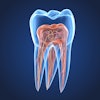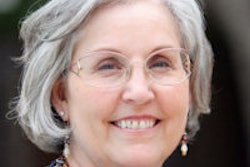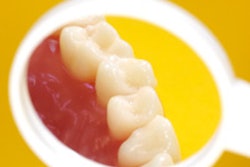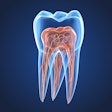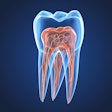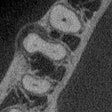
Edentulism has declined dramatically among affluent Americans but less so among low-income households, according to a new study in the Journal of Dental Research (August 21, 2014).
The study by the International and American Associations for Dental Research (IADR/AADR) charted edentulism over the last century and highlighted the numbers of people losing teeth and requiring dentures.
 Gary Slade, DDPH, PhD.
Gary Slade, DDPH, PhD.Lead researcher Gary Slade, DDPH, PhD, a professor in the department of dental ecology at the University of North Carolina at Chapel Hill School of Dentistry, investigated population trends in edentulism among U.S. adults at least 15 years old by creating time-series data from five national cross-sectional health surveys: 1957-1958 (n = 100,000 adults), 1971-1975 (n = 14,655 adults), 1988-1998 (n = 18,011 adults), 1999-2002 (n = 12,336 adults), and 2009-2012 (n = 10,522 adults).
The results showed that edentulism prevalence declined from 18.9% in 1957-1958 to 4.9% in 2009-2012. The single most influential determinant of the decline was the passing of generations born before the 1940s, whose rate of edentulism incidence (5% to 6% per decade of age) far exceeded later cohorts (1% to 3% per decade of age). High-income households experienced a greater relative decline, although a smaller absolute decline than low-income households.
By 2010, edentulism was rarely seen in high-income households. States with disproportionately high poverty rates had higher edentulism rates. The rate of decline in edentulism is projected to slow, reaching 2.6% by 2050. The continuing decline will be offset only partially by population growth and population aging, such that the predicted number of edentulous people in 2050 (8.6 million) will be 30% lower than the 12.2 million edentulous people in 2010.
"While it's encouraging to know that this study illustrates a steep decline in U.S. edentulism over the past five decades, these health gains in absolute terms have not been distributed equally," AADR President Timothy DeRouen, PhD, said in a statement. "Additional public health measures must be taken to reduce tooth loss in low-income populations."
